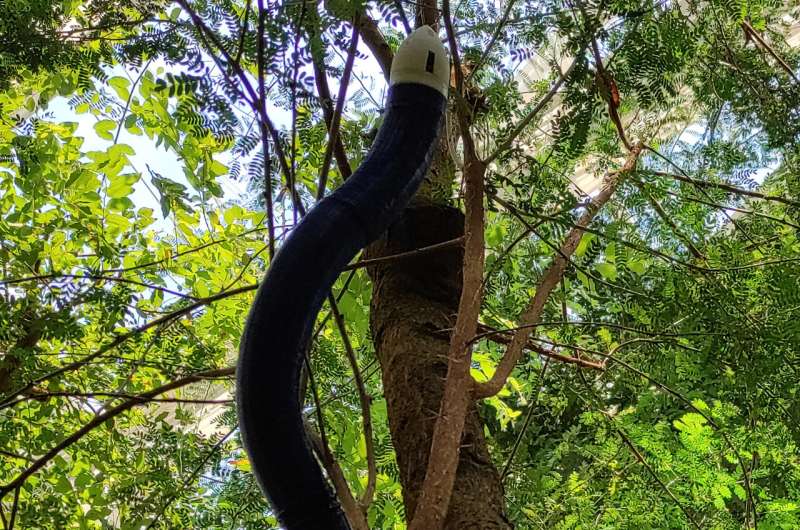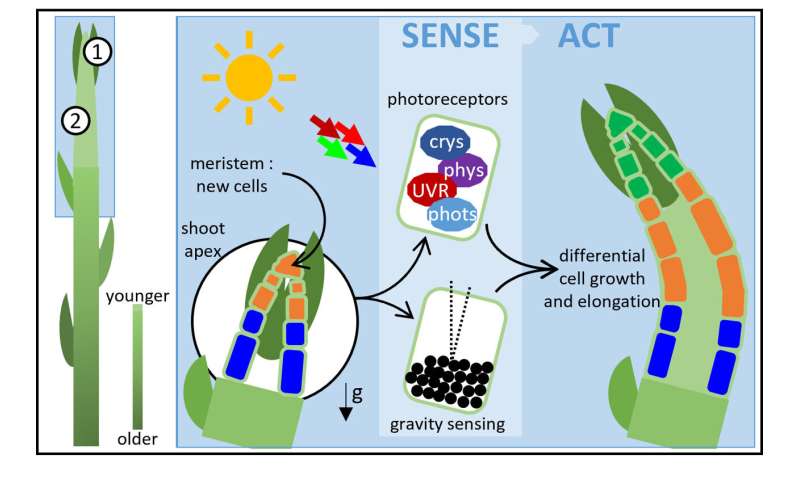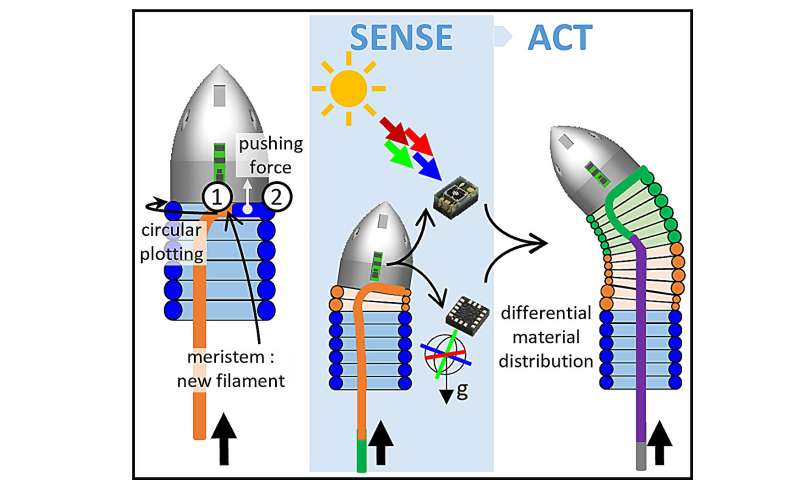
A trio of soft robotics researchers at Fondazione Istituto Italiano di Tecnologia, in Italy, working with a colleague from the University of Montpellier, in France, has developed a unique type of robot that 3D prints its own body as a means to grow longer. In their paper published in the journal Science Robotics, the group describes how they created their robot and the possible uses for it.
As science and technology continue to mature, scientists find novel ways to combine innovations into new types of technology. In this new effort, the research team combined robotics with 3D printing, resulting in the creation of a new kind of robot that can grow longer at will.
The robot is shaped like a snake and has a head that spins. As the head spins, it creates more body mass behind it using 3D printing, resulting in elongation of the robot. The robot can also be programmed to grow in desired ways, such as toward light, or against gravity. This gives the robot the ability to grow in a vine-like manner. The team has named their robot FiloBot.
FiloBot has a tube inside its body that feeds the head, which contains a 3D printer ink, a type of plastic. The head then prints in a rotating fashion, coiling body material behind it. On the opposite end, at the rear of the robot, is a base holding the inkwell, a pump and a power source.
Inside the head, along with the printer, are electronics that respond to signals from sensors on an exterior part of the head. Input from the sensors is used to control the output of the printer—it is able to speed up or slow its rate of spin and the amount of ink supplied. This allows for controlling the direction of growth.
The researchers suggest possible uses for their robot include monitoring or even interacting with unstructured (natural) environments or building autonomous structures. It could also be used to monitor landscapes to estimate the likelihood of avalanches or landslides and test pollution levels in difficult to reach areas.
-

Simplified representation of the growth zones, their functions, and growth responses. The shoot apex comprises layers of cells that constitute the meristematic part (point 1) and the cell elongation region (point 2). Photoreceptors and gravity- sensing cells are distributed within the shoot apex. Perception of external signals is thus localized in the apical part, where actuation is also implemented. Processing of an external stimulus dictates cell growth, elongation, and the resulting orientation of the shoot. In the example, photo-perception defines the shoot movement toward light merged with gravity perception against gravity. Credit: Science Robotics (2024). DOI: 10.1126/scirobotics.adi5908 -

Schematic representation of the growing robot regions, their functionalities, and growth responses. Analogous to the shoot apex, the robot comprises sensing elements and a material deposition region localized at its head (points 1 and 2). In the meristem- like region, there is the addition of material and the generation of forces needed to propel the tip forward. Control of the plotting defines either a lower or higher material layer along the stem axis analogous to differential cell division and elongation. In analogy with the biological model, the robot processes sensory inputs and defines a differential material deposition both toward light and against gravity. In both the natural and artificial models, the already grown part of the body no longer moves or reorientates with respect to the environment. Credit: Science Robotics (2024). DOI: 10.1126/scirobotics.adi5908
More information: Emanuela Del Dottore et al, A growing soft robot with climbing plant–inspired adaptive behaviors for navigation in unstructured environments, Science Robotics (2024). DOI: 10.1126/scirobotics.adi5908
© 2024 Science X Network
Citation: Novel snake-like robot 3D prints its own body to grow longer (2024, January 19) retrieved 19 January 2024 from https://techxplore.com/news/2024-01-snake-robot-3d-body-longer.html
This document is subject to copyright. Apart from any fair dealing for the purpose of private study or research, no part may be reproduced without the written permission. The content is provided for information purposes only.
